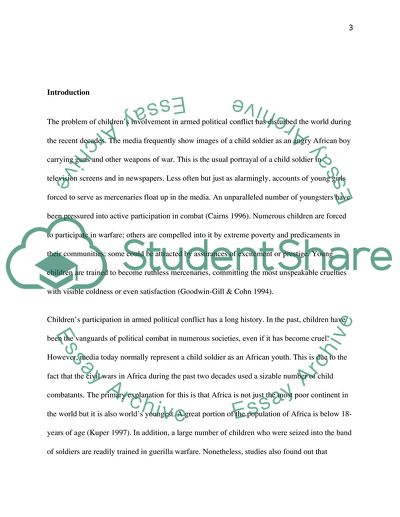Cite this document
(The Images of a Child Soldier as an Angry African Boy Carrying Guns Research Paper, n.d.)
The Images of a Child Soldier as an Angry African Boy Carrying Guns Research Paper. Retrieved from https://studentshare.org/military/1728566-how-has-the-image-of-child-soldier-changed-over-time-history-of-child-soldiers
The Images of a Child Soldier as an Angry African Boy Carrying Guns Research Paper. Retrieved from https://studentshare.org/military/1728566-how-has-the-image-of-child-soldier-changed-over-time-history-of-child-soldiers
(The Images of a Child Soldier As an Angry African Boy Carrying Guns Research Paper)
The Images of a Child Soldier As an Angry African Boy Carrying Guns Research Paper. https://studentshare.org/military/1728566-how-has-the-image-of-child-soldier-changed-over-time-history-of-child-soldiers.
The Images of a Child Soldier As an Angry African Boy Carrying Guns Research Paper. https://studentshare.org/military/1728566-how-has-the-image-of-child-soldier-changed-over-time-history-of-child-soldiers.
“The Images of a Child Soldier As an Angry African Boy Carrying Guns Research Paper”, n.d. https://studentshare.org/military/1728566-how-has-the-image-of-child-soldier-changed-over-time-history-of-child-soldiers.


